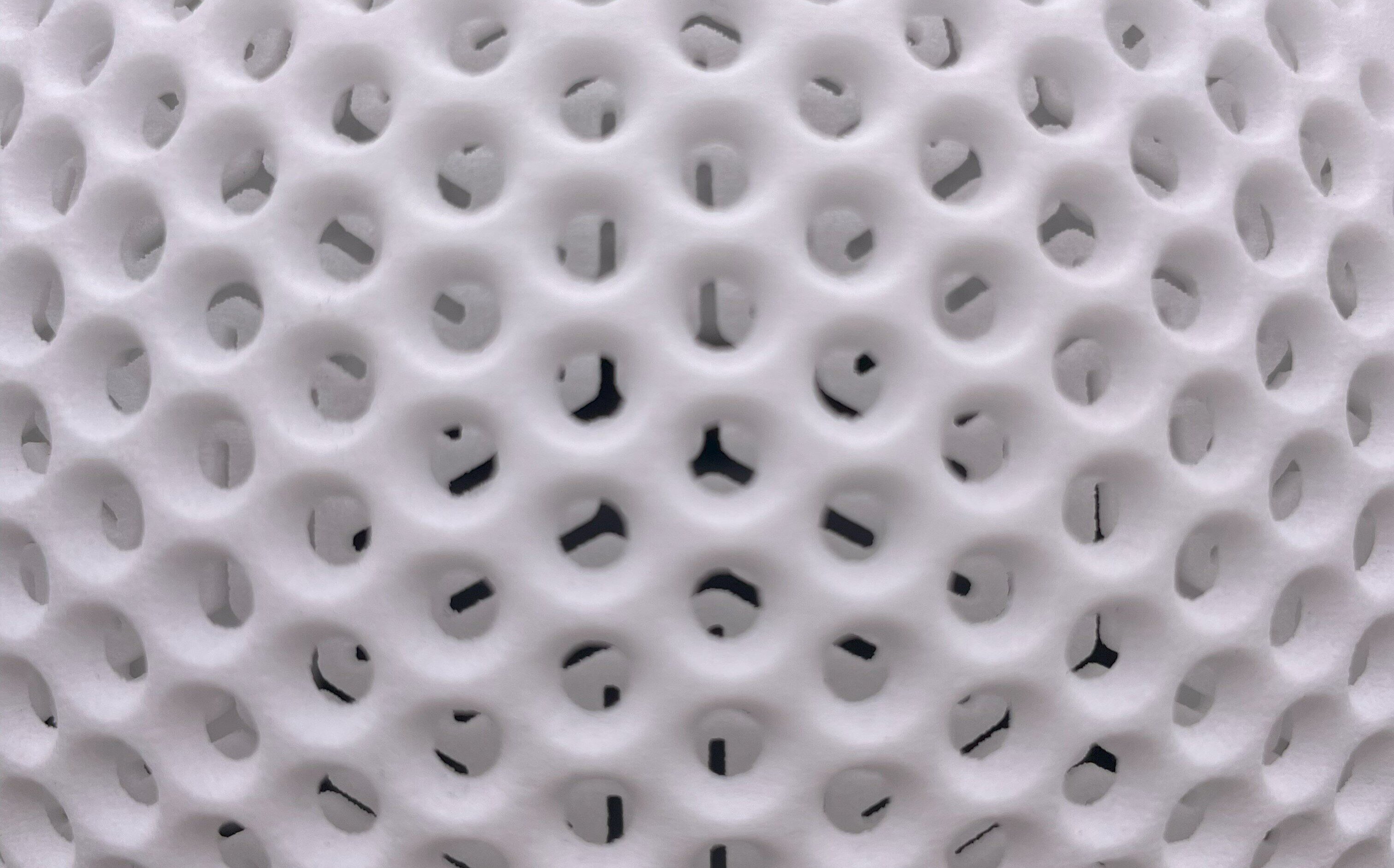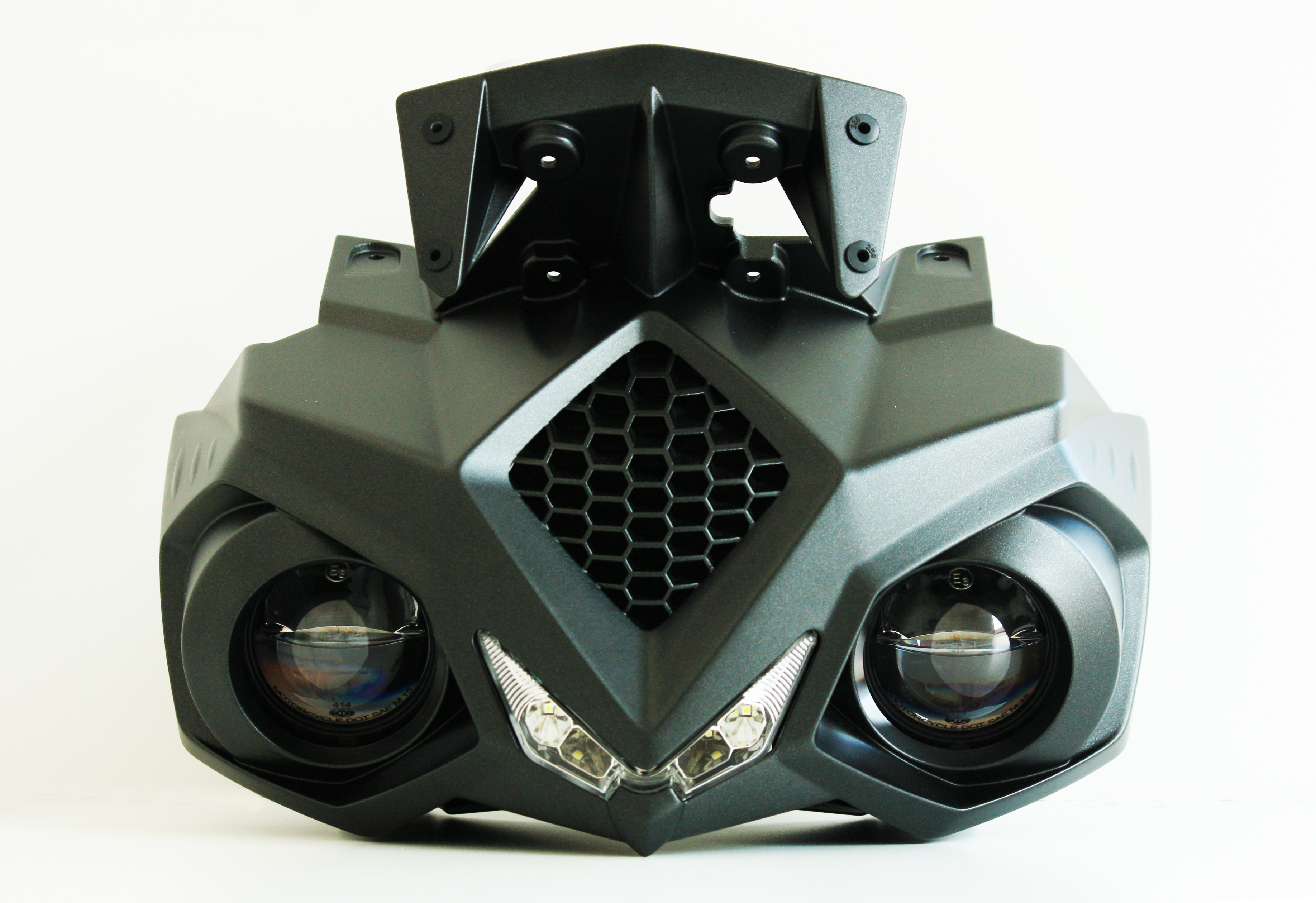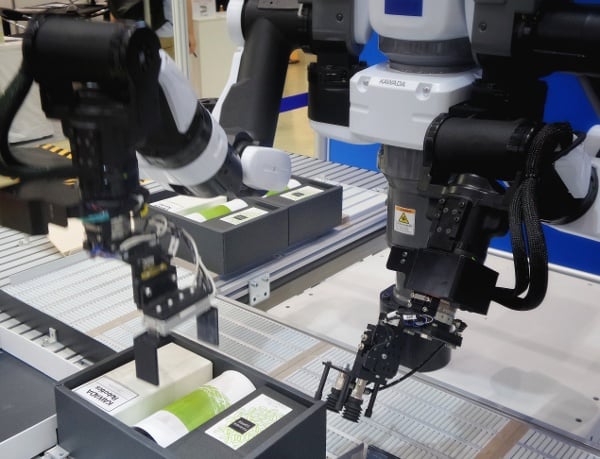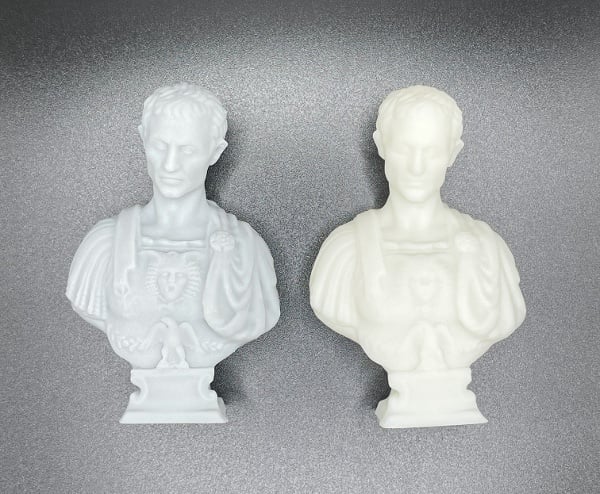What are lattice structures in 3D printing?
Scientifically, lattices are a key part in nature’s formations. An example of a natural lattice structure is the honeycomb from beehives, this structure helps bees to convserve their resources and energy.
This has inspired engineers to use lattices within engineering design to create lightweight but robust parts and products. They are built through several interlocking ‘cells’ that creates a strong structure.
Within the 3D printing industry, more design engineers are using lattice structures across a range of industries to build more efficient parts for their applications.
Lattice Structures Across Industries
Different industries are beginning to utilise 3D printing lattice structures more and more within their design processes after seeing the benefits and cost savings they can make. Amongst these industries are automotive companies, sports goods manufacturers, aerospace and more who are already using additive manufacturing to support their production.
Sporting goods manufacturers
More and more manufacturers of protective sportswear are using lattices and 3D printing for their products. One being Xenith, working with additive manufacturing technologies to produce the Orbit X Pro American football helmet. The lattice was sandwiched between a moulded shell for impact resistance. Enabling airflow, reducing weight and dissipating the impact from the shell. You can read more on this helmet, here.
Automotive lattice parts
The automotive sector benefits from the lightweighting, airflow and cooling features that lattice structures allow. For example, Porsche introduced a concept for a new sports car that included a 3D printed lattice for the central seat section. This seat has 3 selections of firmness that is achieved through additive manufacturing technologies. Porsche additionally created a 3D printed lattice e-drive housing structure that reduced the housing weight by 40% and e-drive by 10%.
New legislation pushing more UK vehicles to be electric means that automotive companies benefit from the lightweight parts that lattices can achieve at a lower cost.
Aerospace 3D printed lattices
Lattice 3D structures within aerospace greatly enable manufacturers to reduce the mass of components to increase fuel efficiency within the aircraft. These also enable aerospace manufacturers to create housings that are more effective such as heat exchangers as the lattices enable energy redirection and absorption of vibrations.
Medical
Within the medical industry, lattices are being used to mimic bone properties for implants. These implants have a dense structure making them durable and robust.
These structures can replicate and absorb impact that the human body goes through efficiently.
Types of 3D printed lattices
TPMS
A TPMS 3D printed lattice refers to a structure created using Triply Periodic Minimal Surfaces (TPMS) in additive manufacturing, particularly 3D printing. TPMS are mathematical surfaces that repeat periodically in three dimensions and have minimal surface area for a given boundary, making them an efficient way to distribute material. They are commonly used in creating complex, lightweight, and strong lattice structures.
Key Features of TPMS 3D Printed Lattices:
Geometry:
Minimal Surface: TPMS have the property of minimising surface area, which often translates to minimal material usage while maintaining structural integrity.
Periodic Nature: These surfaces repeat in a periodic fashion, which allows for uniform and predictable mechanical properties.
Types of TPMS:
Common types include Gyroid, Schwarz D, and Neovius surfaces, each with unique geometrical and mechanical properties.
Applications:
Medical: Used in orthopaedic implants due to their ability to promote bone growth and their customisable mechanical properties.
Aerospace: Used for lightweight yet strong components.
Automotive: Employed in designing components that require high strength-to-weight ratios.
Architectural: Utilised in creating aesthetically pleasing yet structurally efficient designs.
Manufacturing:
3D Printing: Additive manufacturing techniques like SLS (Selective Laser Sintering), SLA (Stereolithography), and DMLS (Direct Metal Laser Sintering) are often used to produce these intricate geometries.
Advantages of TPMS Lattices:
Strength-to-Weight Ratio: They provide high strength while being lightweight.
Customisation: Properties can be tailored by changing the lattice parameters.
Material Efficiency: Less material is used compared to solid structures, reducing costs and weight.
Strut
A strut 3D printed lattice is a type of lattice structure composed of interconnected struts or beams. These struts form a network of repeating unit cells, creating a lightweight yet strong framework that is often used in engineering and manufacturing for its high strength-to-weight ratio and customisable properties.
Key Features of Strut 3D Printed Lattices:
Geometry:
Strut-Based Design: The structure is made up of straight or curved beams (struts) that connect at nodes, forming a repetitive pattern.
Unit Cells: The repeating unit cells can be of various shapes, such as tetrahedrons, octahedrons, or other polyhedra.
Types of Strut Lattices:
Tetrahedral: A lattice structure where each unit cell is a tetrahedron.
Octahedral: Each unit cell is an octahedron, providing more connectivity and potentially higher strength.
Kagome: A more complex lattice with a pattern resembling a traditional Japanese basket-weaving technique.
Applications:
Aerospace: Used in lightweight components such as aircraft and spacecraft parts.
Automotive: Applied in crash-resistant components, frames, and other parts requiring high strength-to-weight ratios.
Medical: Utilised in orthopaedic implants and prosthetics for their customisable mechanical properties.
Energy: Used in battery structures and lightweight frameworks for energy-efficient devices.
Manufacturing:
3D Printing: Techniques such as Selective Laser Sintering (SLS), Fused Deposition Modeling (FDM), and Direct Metal Laser Sintering (DMLS) are commonly used to produce these lattices due to their ability to handle complex geometries.
Advantages of Strut Lattices:
High Strength-to-Weight Ratio: The geometry allows for maximum strength with minimal material usage.
Customisable Mechanical Properties: By altering the strut dimensions and unit cell design, specific mechanical properties can be tailored to the application.
Energy Absorption: Excellent for applications requiring impact resistance due to the energy-absorbing nature of the lattice.
Planar
A planar 3D printed lattice is a type of lattice structure that lies primarily within a two-dimensional plane but can exhibit some three-dimensional characteristics. These structures consist of repeating geometric patterns that form a flat or slightly curved surface, making them suitable for applications requiring lightweight, strong, and flexible materials.
Key Features of Planar 3D Printed Lattices:
Geometry:
Planar Arrangement: The structure is primarily flat, consisting of interconnected beams or struts arranged in a two-dimensional pattern.
Pattern Repetition: These lattices typically involve repeating unit cells, which can be simple (like squares or triangles) or more complex (like hexagons or custom shapes).
Types of Planar Lattices:
Hexagonal Lattice: Known for its high strength-to-weight ratio and efficient space-filling properties.
Square Lattice: Simple and commonly used for ease of design and fabrication.
Voronoi Lattice: Based on Voronoi diagrams, these lattices have irregular, organic shapes that can be tailored for specific mechanical properties.
Applications:
Medical: Used in the design of flexible yet strong medical implants and scaffolds for tissue engineering.
Aerospace: Employed in lightweight panels and components where planar structures are beneficial.
Automotive: Used in interior components and crash protection elements.
Architecture: Utilised in creating decorative and functional architectural elements like screens and panels.
Manufacturing:
3D Printing: Techniques such as Stereolithography (SLA), Selective Laser Sintering (SLS), and Fused Deposition Modeling (FDM) are often used to produce these structures, allowing for precise control over the lattice geometry.
Advantages of Planar Lattices:
Lightweight: Efficient use of material reduces weight while maintaining structural integrity.
Flexibility: Can be designed to be flexible or rigid depending on the application requirements.
Customisation: Easily tailored to specific needs by altering the pattern and size of the unit cells.
Summary
Designing lattice structures can help to create a more robust part / product. 3D printing can help achieve these intricate details within a short timeframe.




